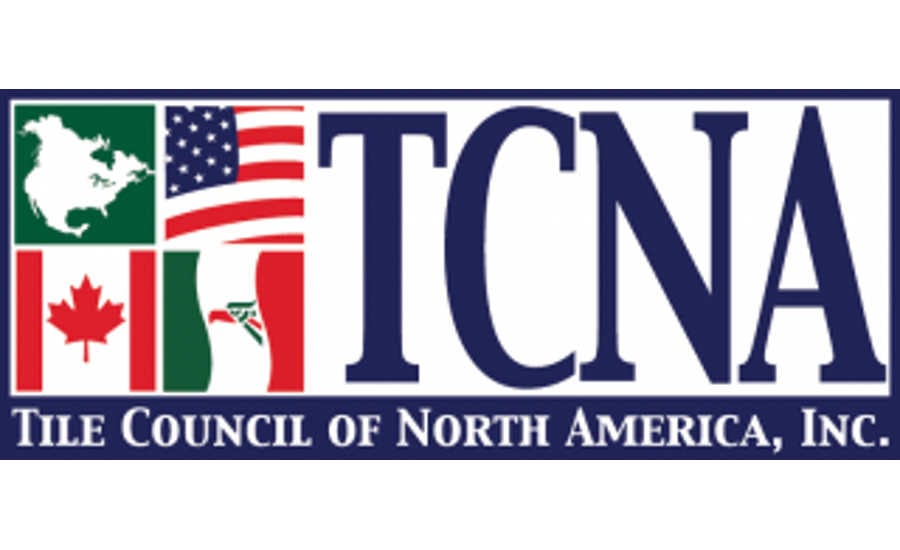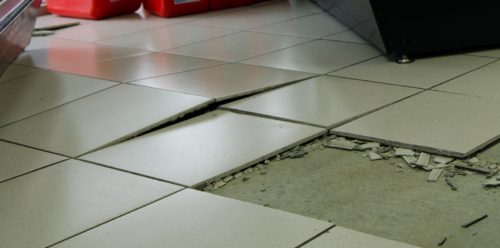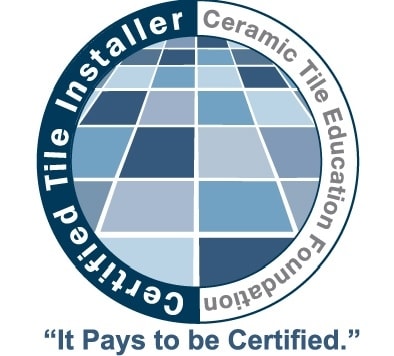Learning the Best Practices for Tile and Stone Installations by the Tile Council of North America
One of the things about Norstone that makes our products unique from other veneers is that we really see and sell the product as a precision tile, as opposed to a more traditional masonry product. Traditional masonry involves taking relatively basic inputs, like plain cut stone and mortar, and leveraging the talents of the installer to create something beautiful on a wall. We leverage our ability to produce this same look, but in a thin panel format, which allows the product to be installed by a tile setter in lieu of a stone mason. So we’re always interested in learning more about how tile is installed and common mistakes made installing tile so we can pass this information on to our clients.
This past week one of our distribution partners in South Florida was hosting a series of workshops during the evening hours where they invited an educator from the Tile Council of North America to come and speak to their customers, who are primarily tile contractors, about the right and wrong way to be installing tile. During these workshops the TCNA also promoted their certification program which allows an installer to become a TCNA certified installer. Here’s a quick highlight of some of the main topics covered in these workshops.

Thinset Coverage: The amount of tile thinset coverage that an installer gets on the back of a tile is one of the critical components of a quality installation. The size of the trowel notch relative to the size of the tile and the way the thinset is troweled in straight lines and not swirls all contribute to making sure the back of the tile has adequate thinset coverage. For a natural stone tile product like Norstone, the TCNA recommends 95% coverage, which is why its so important to follow our recommended installation practice of back buttering each panel and using a 1/2” square notch when installing. Insufficient coverage can lead to the failure of the installation.
Expansion Joints: During the workshop the TCNA educator did a great demonstration showing how the expansion of a tile or surrounding substrate by as a little as the width of a penny can cause tiles to buckle. Norstone recommends perimeter expansion joints in all installations to ensure that as the installation, including the stone, substrate, and wall system, expand and contract according to the local environmental conditions, everything stays stable.

Installer’s Responsibilities: A key takeaway the TCNA wanted to stress to the installers in the audience was that if the tile installation failed, even if the tile installer did everything correctly, it is still going to be the tile installers problem to handle. For example, if a homeowner insists on not having a perimeter expansion joint because they want a tight look of tile against wall or floor, and the installation ends up failing, it looks bad on the installer. Or if the framer on a job framed out a shower using treated wood, which contains moisture and will expand / contract over time, instead of regular kiln dried wood, the installation might fail and again the tile installer looks bad. The TCNA stresses that its important for all tile installers to make sure every component of their installations are done correctly because as the finishing surface the first thing people will assume was done wrong on a failed installation is the tile.
Certified Installers: One of the more interesting industry level topics coming out of this week’s workshops was the concept that the industry is shifting and starting to put a premium on certified installers. The process is starting at the specification level, where architects and designers that are are choosing what products get used on their projects, are beginning to include in the specification document that the installer must be certified. Specifiers have long recommended that the product be installed by a “professional” tile setter, but with the added nuance of that professional being “certified” only serves to increase the value of the certification to installers and is something to look for when hiring a contractor for your next stone or tile job.

Unlike many of our peers in the industry, the background of the leadership team at Norstone doesn’t include any professional “bucket and trowel” experience, however that hasn’t stopped us from vigorously learning and consulting with industry leaders over the past decade to develop the best practices for installing Norstone products. This week’s TCNA workshops were a great reminder that while it could seem simple on the surface, installing tile is much more than it seems and a wide ranging variety of factors need to be taken into consideration when doing so. So whether you have questions about a Norstone installation you have planned for the future, or are in the middle of one right now, don’t hesitate to contact us and speak with our technical service team or email us your question and we’ll get back with you right away. Until then – happy tiling!
.png)



